The cutting edge: Collective Design Fair champions independent design talent
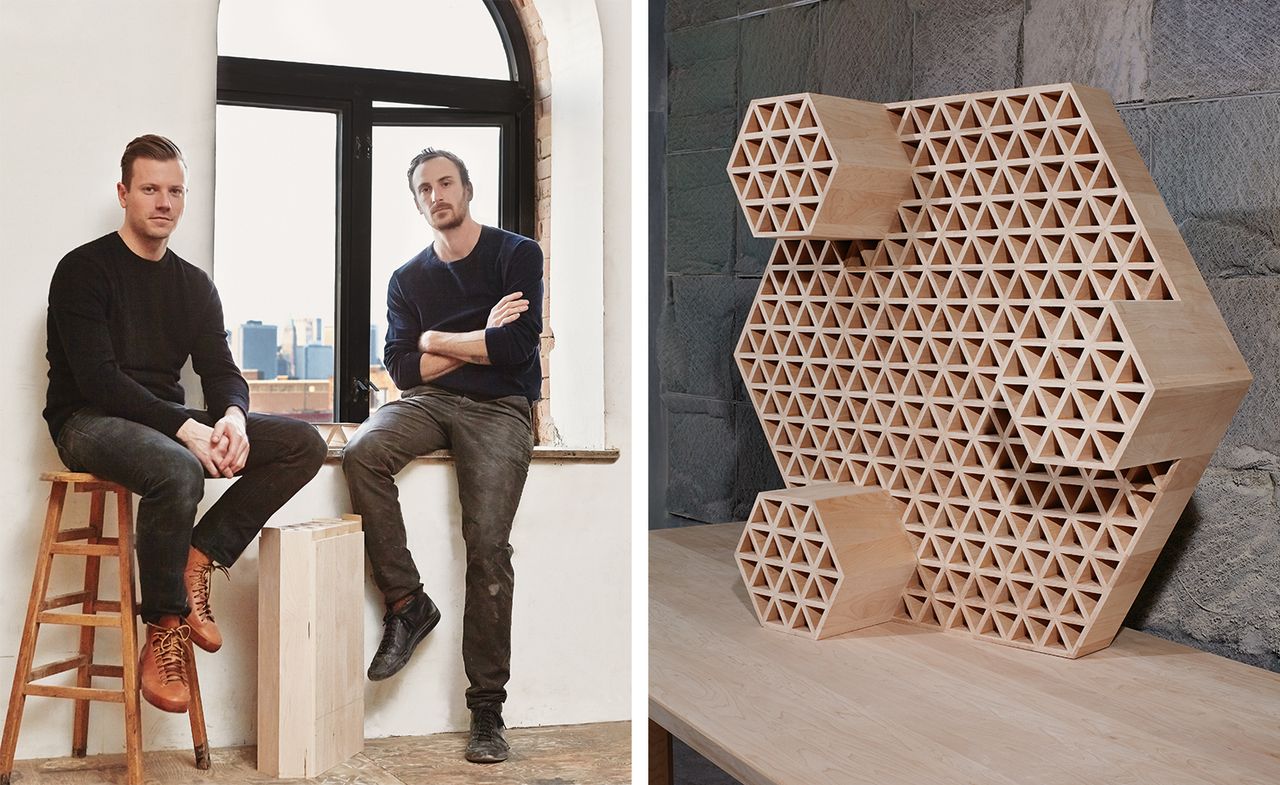
A young design firm without gallery representation can struggle to, well, represent. A number of key design fairs are built around signing up galleries and their rosters. No gallery, no way in. Collective Design Fair, the New York-based showcase for collectible design, is attempting to change that. It launched a programme at its fourth annual edition, starting today – 4 May – called Collective Concept, which enabled five independent and unrepresented studios to present their work.
Brooklyn-based firm Fort Standard is one of the five (the others are Lindsey Adelman, Apparatus, Calico Wallpaper and Cocobolo). Founded in 2011 by Pratt Institute graduates Gregory Buntain and Ian Collings, Fort Standard’s output is typified by a refined approach to materials, a clean aesthetic and an uncomplicated philosophy to functional objects and furniture. The firm’s Red Hook HQ comprises a wood shop, a metal shop and a design studio, where most of its pieces are conceived, designed and produced.
For Fort Standard, the opportunity to exhibit work at Collective Design Fair went far beyond making simple introductions to a collector’s market. ‘We’re very much a studio that produces its own goods,’ says Collings. ‘New York is fostering a new breed of design studio and furniture maker, and young, independent firms are trying to find their way in that community. Being a young company without representation, we have to address the question that [when] we want to produce a more experimental line, there are very few places to debut those things, or to sell them.’ Buntain adds, ‘We don’t want to turn into just a furniture company. We have our home goods collection that does well for us, but we’re interested in [shaping] our business so that we can continue to spend the majority of our time designing. Taking a step towards the collector’s market will allow us to do that.’
The duo approached Collective Design Fair founder Steven Learner to talk about their participation around a year ago, not long before the notions of Collective Concept came into being. Subsequent conversations informed the collection, entitled 'Qualities of Material', that they will unveil at the fair.
‘The thing that Steven was driving home,' Collings says, 'was to use [this collection] as a way to tell the story of the type of studio we are and how we design and make our work.’ Buntain continues, ‘Steven recognised that there is exciting work being produced by designers who aren’t represented by galleries. It was a ready opportunity for [the fair].’
Inspired by the materials that it has long held dear, Fort Standard sought to add unexpected functionalities to wood, stone and leather. Thin, quarter-inch maple planks were layered and configured to add strength but maintain lightness; panels of stone were carved out to make them light enough to produce cabinetry; and leather was rolled and coiled so that it possesses sufficient structure to sustain a person’s weight.
The results include an ‘Assemblage’ dining table, bench and hexagonal coffee table, made from maple; a single-door ‘Relief’ bedside cabinet and a larger, six-door wardrobe made from soapstone; and a ‘Stacked’ chair made from laminated leather.
These material interventions came out of years of experimentation. Collings says, ‘We kept asking: how do you make this piece of leather stronger, how do you make this piece of wood more structural, how do you make this piece of stone lighter? The thing about soapstone is that you can cut it with carbide; you don’t need diamond to cut it. So we worked it with woodworking tools and current tool set-ups, and experimented with how thin we could get it.’
Each design is made in a limited edition, with future variations to come. ‘Each of the concepts has the ability to be translated into different kinds of objects,’ says Buntain. ‘It was important for us to present the three materials together and show their strengths and possibilities. Because we knew the work would be shown in the context of Collective Design Fair, we were able to push it into this realm. If we had shown up at ICFF with our collection, people would probably have thought we were crazy.’
As originally featured in the June 2016 issue of Wallpaper* (W*207)
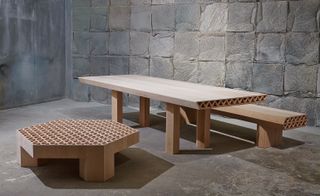
Assemblage’ coffee table, 10ft dining table and bench, made using configurations of maple to create structure and strength
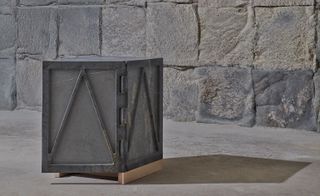
Relief’ bedside table in soapstone, which was cut away for lightness
INFORMATION
Collective Design Fair is on view until 8 May. For more information, visit the Fair’s website.
For more information on Fort Standard, visit the practice’s website.
Photography: Robin Stein
ADDRESS
Collective Design Fair
Skylight Clarkson Square
550 Washington Street
New York
Wallpaper* Newsletter
Receive our daily digest of inspiration, escapism and design stories from around the world direct to your inbox.
Pei-Ru Keh is a former US Editor at Wallpaper*. Born and raised in Singapore, she has been a New Yorker since 2013. Pei-Ru held various titles at Wallpaper* between 2007 and 2023. She reports on design, tech, art, architecture, fashion, beauty and lifestyle happenings in the United States, both in print and digitally. Pei-Ru took a key role in championing diversity and representation within Wallpaper's content pillars, actively seeking out stories that reflect a wide range of perspectives. She lives in Brooklyn with her husband and two children, and is currently learning how to drive.
-
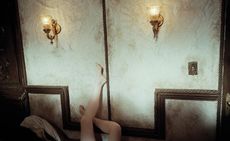 Unlike the gloriously grotesque imagery in his films, Yorgos Lanthimos’ photographs are quietly beautiful
Unlike the gloriously grotesque imagery in his films, Yorgos Lanthimos’ photographs are quietly beautifulAn exhibition at Webber Gallery in Los Angeles presents Yorgos Lanthimos’ photography
By Katie Tobin Published
-
 Remembering architect David M Childs (1941-2025) and his New York skyline legacy
Remembering architect David M Childs (1941-2025) and his New York skyline legacyDavid M Childs, a former chairman of architectural powerhouse SOM, has passed away. We celebrate his professional achievements
By Jonathan Bell Published
-
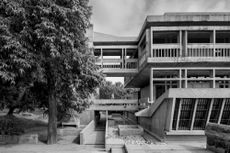 At the Institute of Indology, a humble new addition makes all the difference
At the Institute of Indology, a humble new addition makes all the differenceContinuing the late Balkrishna V Doshi’s legacy, Sangath studio design a new take on the toilet in Gujarat
By Ellie Stathaki Published
-
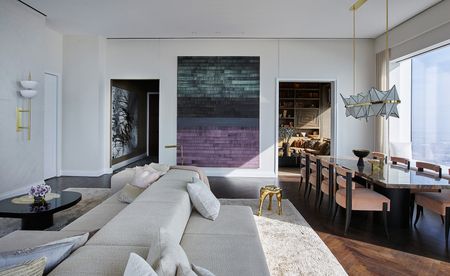 Kelly Behun styles a ‘living gallery’ inside Rafael Viñoly’s 432 Park Avenue
Kelly Behun styles a ‘living gallery’ inside Rafael Viñoly’s 432 Park AvenueBy Sujata Burman Published
-
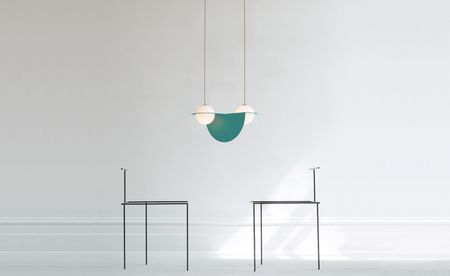 At Kortrijk’s Biennale Interieur, an air of optimism and silver linings
At Kortrijk’s Biennale Interieur, an air of optimism and silver liningsBy Giovanna Dunmall Last updated
-
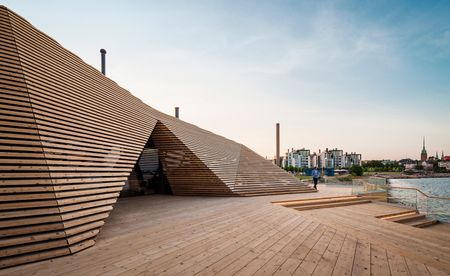 Helsinki Design Week 2016 reveals a Finland steeped in tradition, with an eye on its future
Helsinki Design Week 2016 reveals a Finland steeped in tradition, with an eye on its futureBy Jessica Klingelfuss Last updated
-
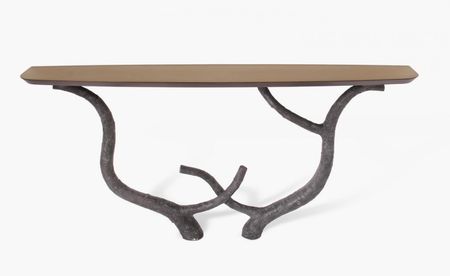 Wallpaper* Approved: our edit of London Design Week’s finest features
Wallpaper* Approved: our edit of London Design Week’s finest featuresBy Sam Rogers Last updated
-
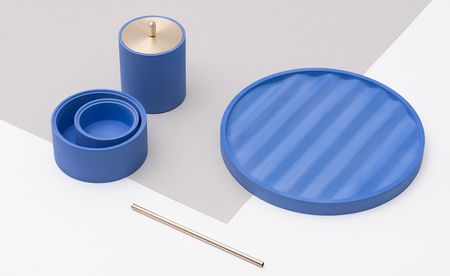 World's fair: what to expect from Design Shanghai 2016
World's fair: what to expect from Design Shanghai 2016By Giovanna Dunmall Last updated
-
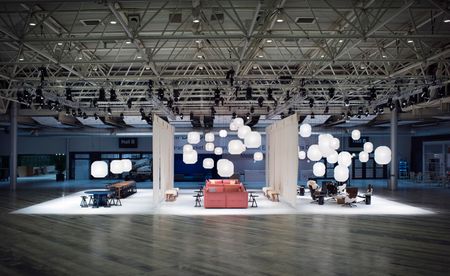 Stockholm Furniture Fair 2016: hot seats, young guns and the new Nordic guard
Stockholm Furniture Fair 2016: hot seats, young guns and the new Nordic guardBy Jessica Klingelfuss Last updated
-
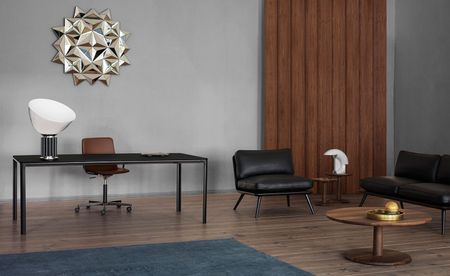 Super normal: Jasper Morrison designs furniture for Danish brand Fredericia
Super normal: Jasper Morrison designs furniture for Danish brand FredericiaBy Sam Rogers Last updated
-
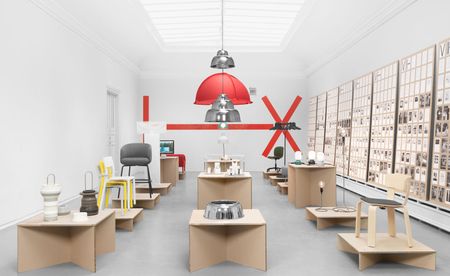 Ten years of change: Form Us With Love present a retrospective in Stockholm
Ten years of change: Form Us With Love present a retrospective in StockholmBy Sujata Burman Last updated